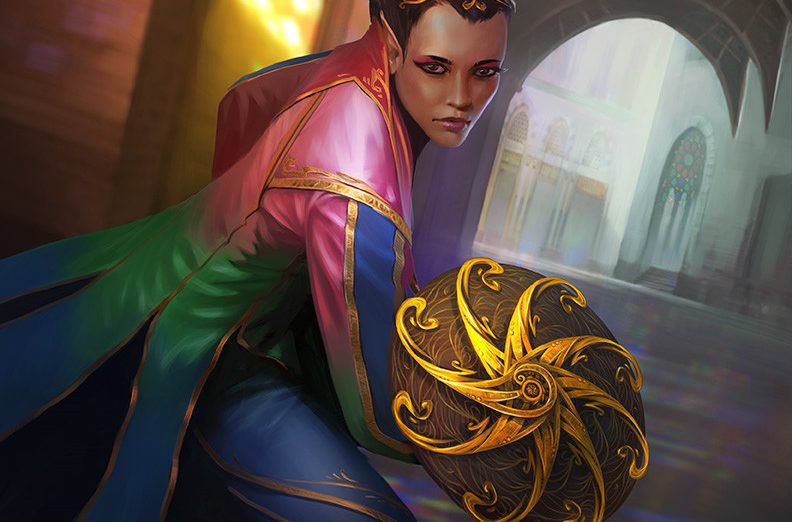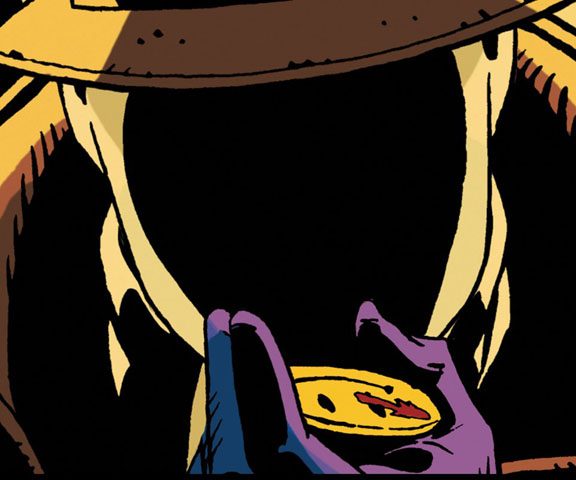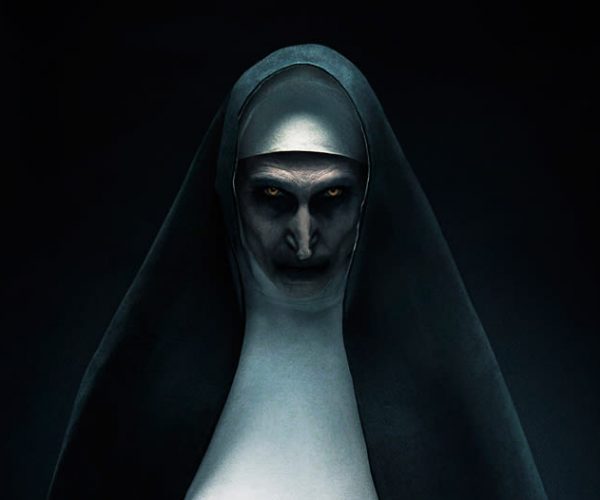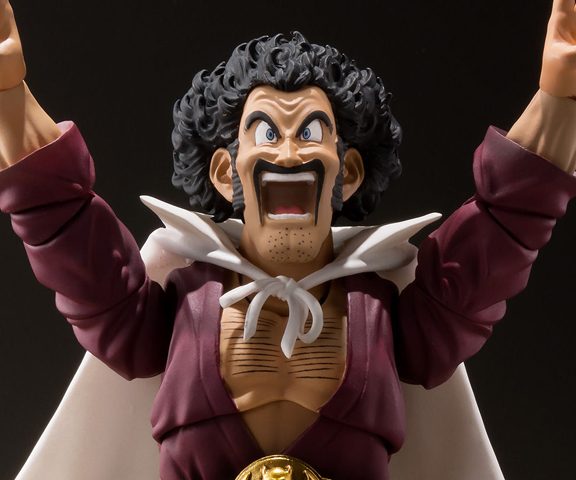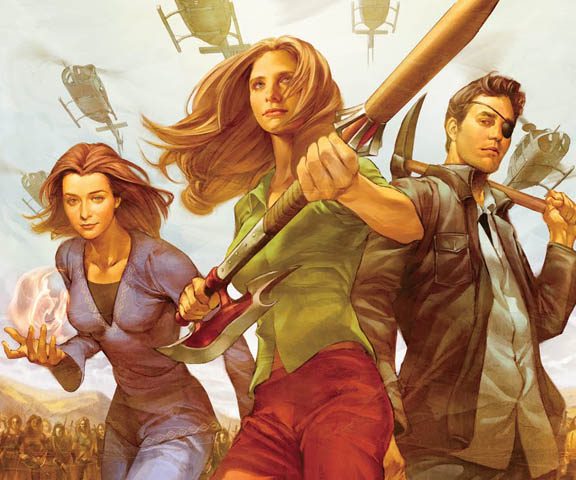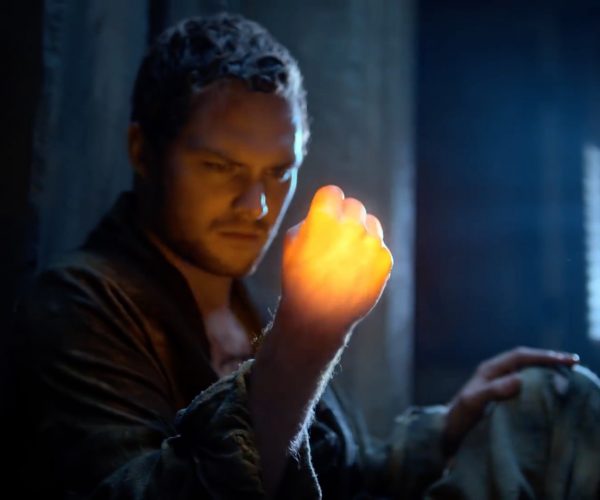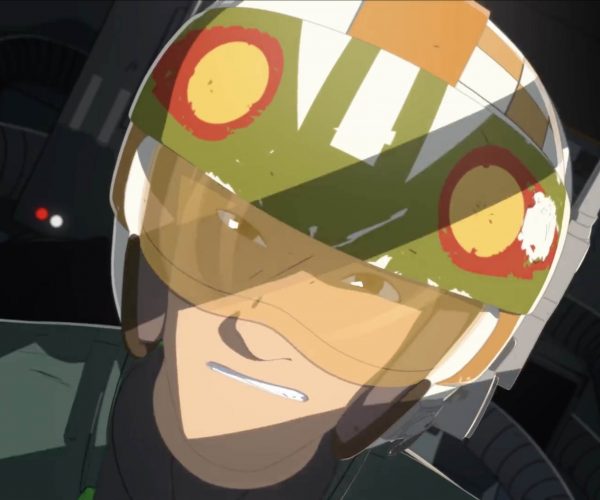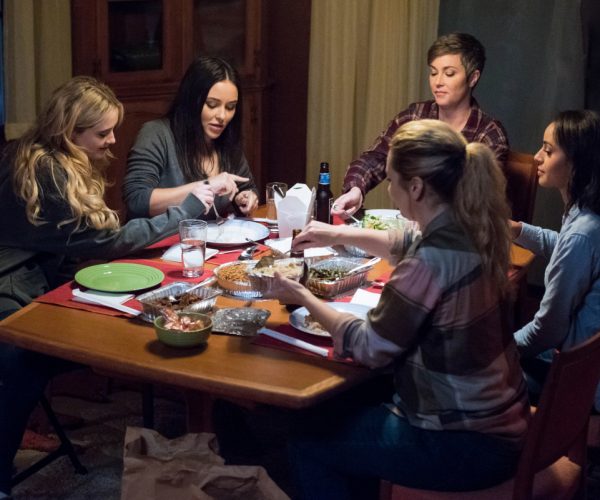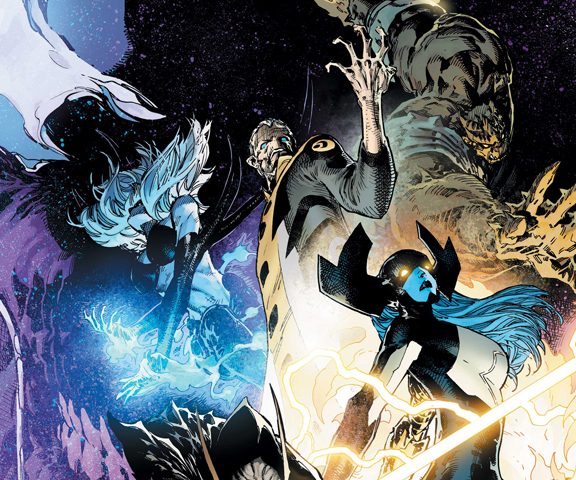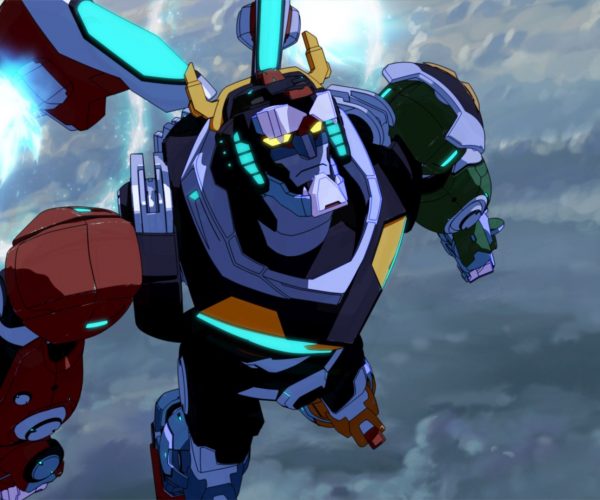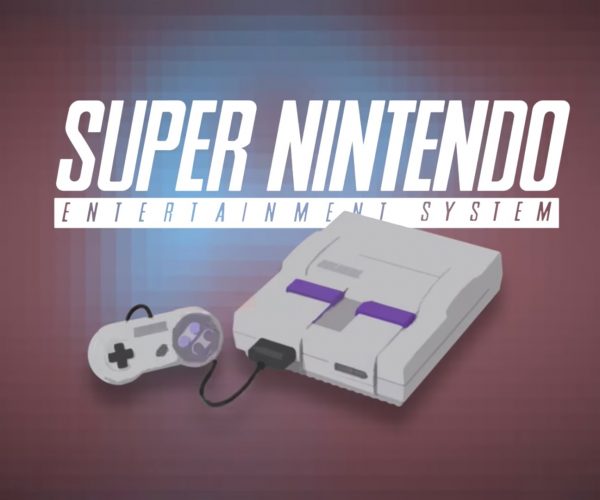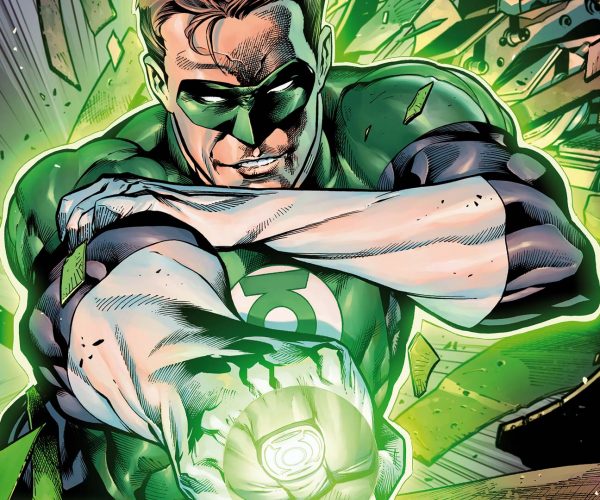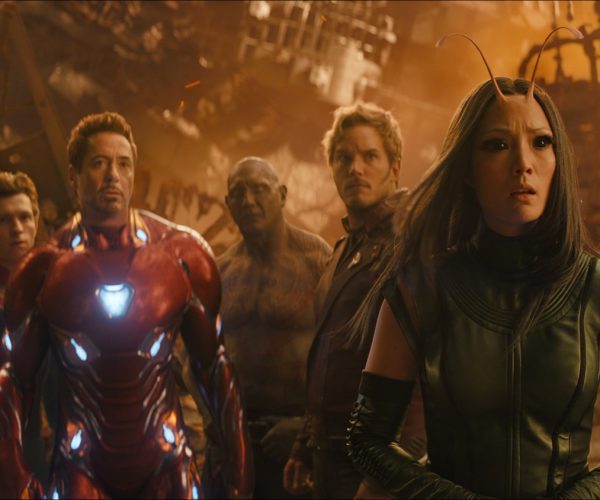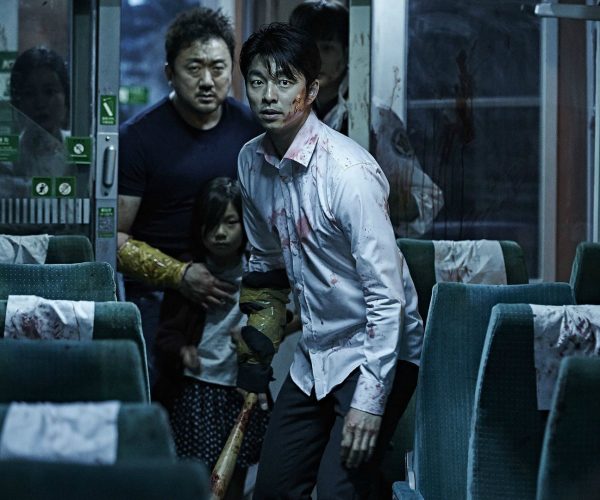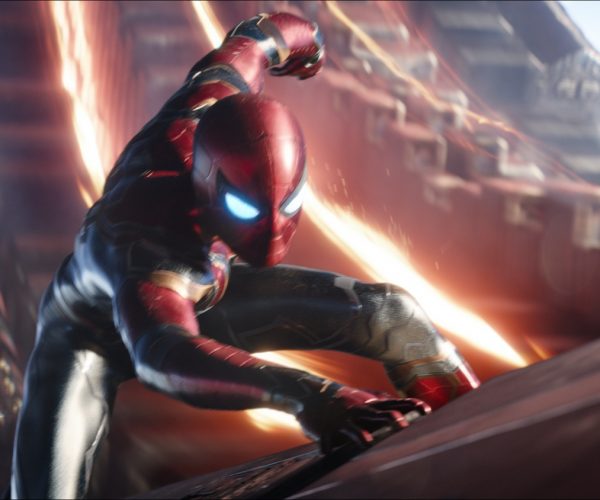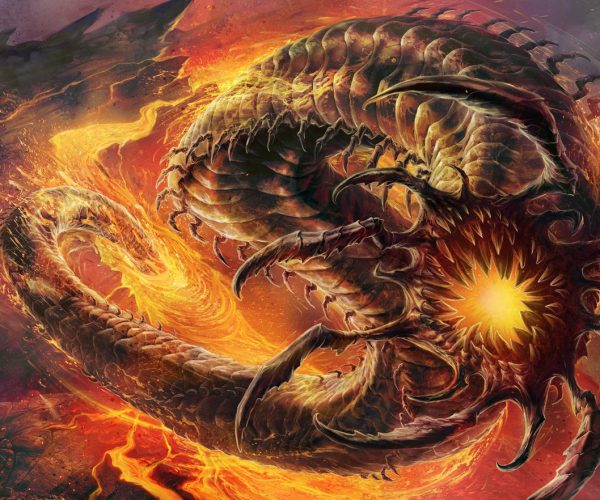We have a Standard rotation coming up in the next few months, and with that, both the Standard and Brawl formats will lose four expansions from their card pool. Both Kaladesh and Aether Revolt, which feel 500 years old at this point, will FINALLY be taking Energy and Vehicles into the abyss with them, and Amonkhet and Hour of Devastation are also exiling the Gods forever.
Some cards we’re happy to see rotate out, others we will sorely miss. Since I’m in a bit of a happy mood today, let’s remember the good times with cards we love from these four expansion sets.
Kaladesh
By far the most controversial of the four expansions, Kaladesh has defined Standard for far too long. Its Energy mechanic has locked down Standard for two years, and even multiple card bannings failed to reel in its power. Vehicles have also provided power to Standard that even the largest creatures have problems providing answers for.
Still, we both love and hate Kaladesh for this reason, and we have a lot of cards we’ll miss.
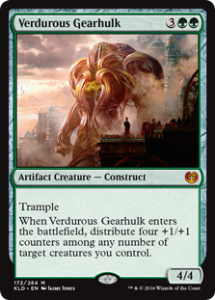
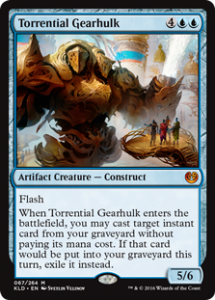
The Gearhulk cycle paid off with these two brutes. Vedurous Gearhulk was originally trumpeted as the strongest of the five, providing 8/8 worth of stats and trample for a mere five mana. Combined with a certain snake that may or may not appear in one of these articles, the maximum that could be pulled from this card was 12/12 worth of stats across four or five creatures… for five mana. It never proved to be as busted as predicted, but it never lost its swagger either, still turning up in decks today.
As usual, Blue overtook all the rest and proved to be the best with Torrential Gearhulk, a card that sealed the deal for many Control decks. This card provided the consistency of Snapcaster Mage wrapped in a 5/5 flash body and partnered well with The Scarab God for over a year. Brutal combination.
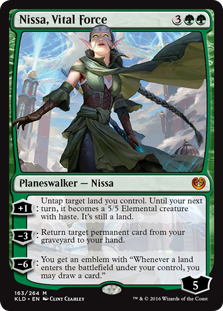
A nice, solid Planeswalker that fits well in any Green sideboard. That’s usually where I prefer my 5-drop Planeswalkers to reside. Not overly powerful on its own but deadly against control decks that are built to take down creatures.
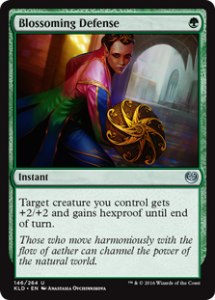
My life, my love, my shield, my protection from mean removal… I’ll miss this card when my Ghalta or my Steel Leaf Champion dies to cheap removal.
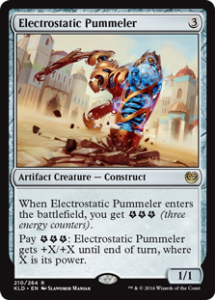
Most took the Temur Energy route when it was at the peak of its pre-banning power, but I never lost faith in the Electrostatic Pummler deck. There is no feeling in the world patiently waiting and taking hits down to critical life levels and then catching an opponent off-guard with a 40/40 hexproof trample artifact creature. Of course, it only works once, but that’s all you need to show your opponent who’s calling the shots.
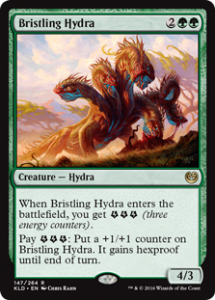
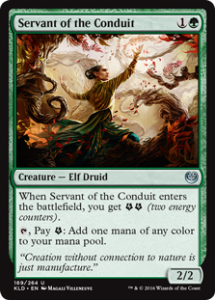
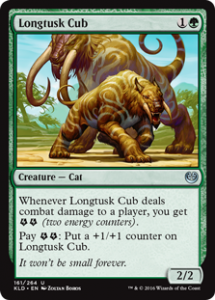
Bristling Hydra is also one of the most efficient Green creatures in recent memory, protecting itself from removal all alone and getting stronger in the process. Two-drop Green “Bear” creatures are also my favorite in Magic, and Kaladesh provided two of the all-time best, a solid mana-fixer in Servant of the Conduit and an ever-growing threat in Longtusk Cub.
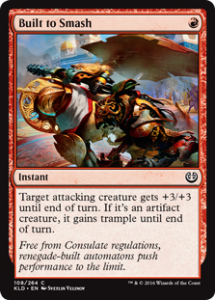
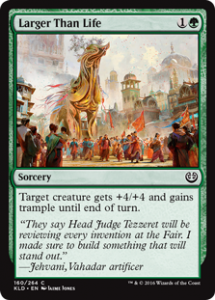
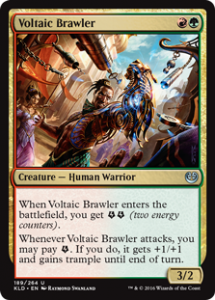
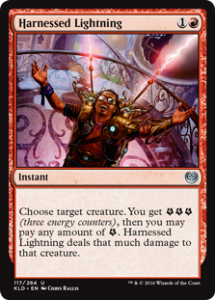
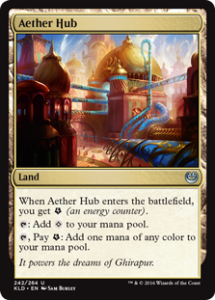
I have few “Hall of Fame” Standard decks that I love enough to keep after rotation, but Red/Green Electrostatic Pummler will be one of them. These cards make up the core of the rest of the deck, providing sideboard options when your opponent goes heavy on Artifact removal and multiple ways to help power up a Pummler to godlike levels.
Harnessed Lightning is also a wonderful removal spell for any Energy deck, providing huge variety in how it is used. Harvest three energy for later, blow away creatures with 6, 8, 10 damage… excellent, spell that never lost potency until the banning of Attune with Aether.
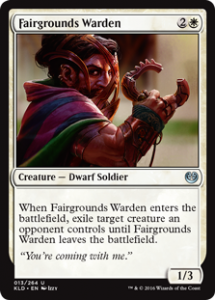
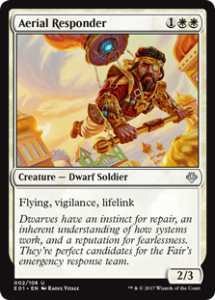
The Uncommon White Dwarves seriously ticked off many of my friends. Fairgrounds Warden came out before Reflector Mage got itself banned, and the two combined well for some of the most contentious games of Magic I’ve ever played.
Aerial Responder never quite reached the levels of Vampire Nighthawk, thanks to overpowered Vehicles, but I always enjoyed including it, especially in decks with Odric, Lunarch Marshal from Shadows over Innistrad.
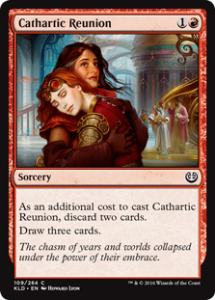
Never quite got there in Standard, but luckily, we still have plenty of options for this card in Modern and Legacy.
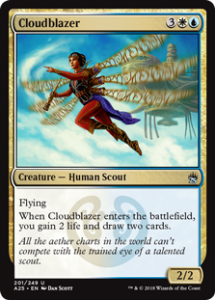
A Limited all-star, this card appeared as Kaladesh’s choice for Masters 25, and it was an excellent choice. Whenever I’m designing a Cube and I reach Kaladesh for card selection, this is always the first card I pick. It provides everything White and Blue decks want: card draw, lifegain, and a solid body on a flyer.
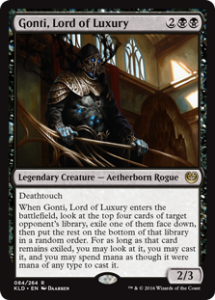
No Black deck is complete without at least one Gonti in the sideboard. Stealing cards and messing up draws are two of the best ways to infuriate opponents in Magic, and Gonti provides both attached to a 2/3 deathtouch body. Yikes!
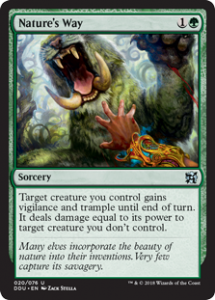
Prey Upon is the prototypical Green removal spell, and it takes a lot to outclass it. Nature’s Way does just that. For an extra mana, the creature gains two relevant abilities in trample and vigilance, and it also doesn’t suffer any blowback from the creature it fights. We’re lucky this card wasn’t an instant.
Aether Revolt
That’s a lot of Kaladesh cards. I don’t think I’ll have as many from Aether Revolt, but we’ll see.
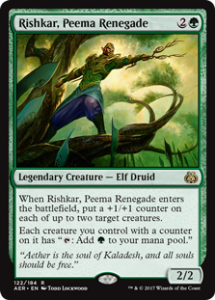
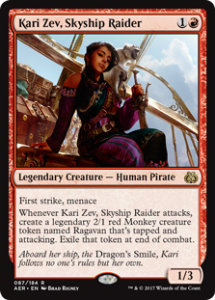
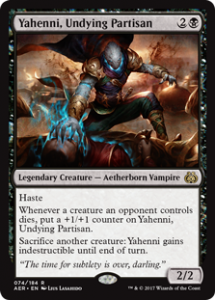
Aether Revolt provided a cycle of small, legendary creatures, and surprisingly, each of them paid off. Blue’s Baral isn’t on here because you’ll probably see him on tomorrow’s list, and Sram has pissed me of too often in Commander to be called a card I’ll miss. However, these three I’ve enjoyed to great extent.
Rishkar was my early favorite, tied alongside Verdurous Gearhulk in early +1/+1 Constrictor decks.
Kari Zev provided a value creature and a Legendary Monkey for Mono-Red that was impossible to block.
I’ve always appreciated Yahenni and have wanted to build around him, but I only just recently did with Slimefoot from Dominaria. It’s a doomed relationship that will disappear far earlier than we hoped.
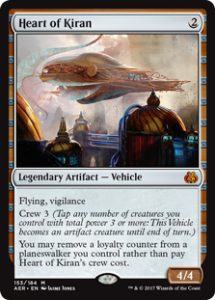
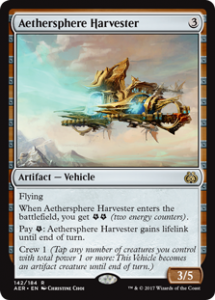
Unlike Kaladesh, I got into Vehicles with Aether Revolt, and these two are the clear best. Heart of Kiran powers out Mono-Green decks with an early flying threat, something you don’t often find in Mono-Green decks.
Aethersphere Harvester ultimately proved to be the true superstar, powering sideboards throughout its existence and turning tokens and Llanowar Elves into flying lifelink threats. The Energy was also an added bonus!
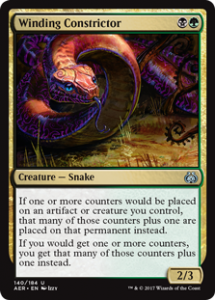
I just about pooped myself when I first saw this card. 2/3 for two mana is a card I’ll always look at, but this card provides such a powerful ability that it is still being used by professionals today. Aether Revolt also came out when Frontier was a thing in Japan, and when combined with Nissa, Voice of Zendikar, Dromoka’s Command, and Hardened Scales… whew.
However, Verduous Gearhulk and Rishkar proved to be enough to solidify this card’s prevalence throughout its Standard run.
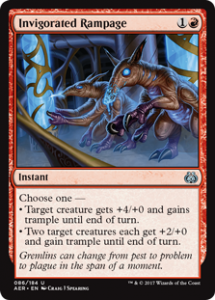
When Aether Revolt came out, I was eager to find a card that could help replace Larger than Life in my Red/Green Electrostatic Pummler deck. Happily, I found this. It provides versatility and instant speed for the same casting cost.
Sure, it doesn’t improve toughness, but that’s a stat that doesn’t matter when you’re charging in with 40 trample damage.
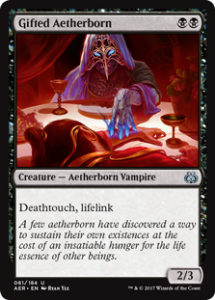
Another 2/3 for two mana. Pure value creature. Gotta love it.
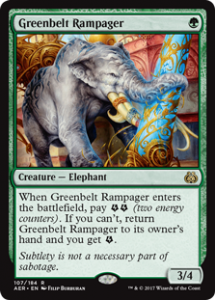
Likewise, a 3/4 for three mana is nothing to turn down either, and this provides the option to use excess mana at the end of your turn. Playing this on turn-2 stops many aggressive creatures in their tracks, and stretching out its casting cost across multiple turns provides energy and an eventual body that remain relevant throughout the game.
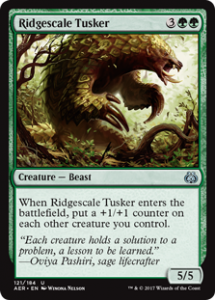
A nice Cube beast and an “mythic uncommon” in draft, this card turned so many Limited games in my favor over the years.
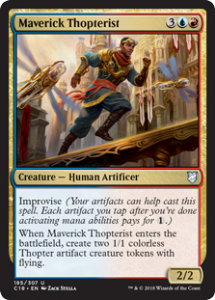
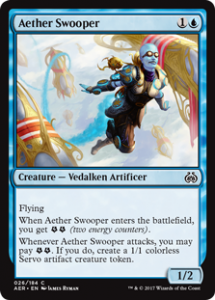
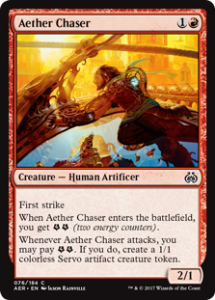
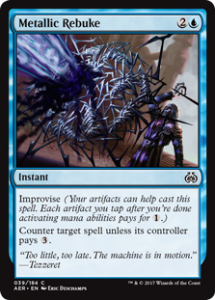
Artificers never materlized into a formidable deck, but if it had, it would clearly be in Blue/Red. These cheap commons were aggressive enough to put away early threats and clog up boards with their token creatures. It’s not often commons become such build-arounds, but the option has been there since Aether Revolt.
Metallic Rebuke is also a card I’ve always respected in this deck. I’m not much of a counterspell guy, but this card was so much fun to cast for a single mana.
Amonkhet
Amonkhet proved to be a fun set over time, even if it was fairly simple and straightforward. The Limited game struck a weird balance where various aggressive decks were a lot of fun and yet not bogged down by the repetitive simplicity we later found in Ixalan.
It’s also worth pointing out that my favorite card, Enigma Drake, is surviving the rotation since it was added to Core 2019. Great choice, in my opinion.
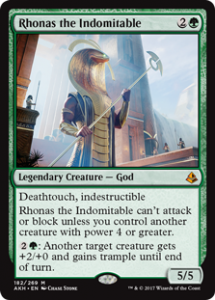
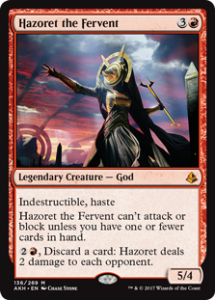
We’ll get the two good Gods out of the way. I’ve loved Rhonas since first laying eyes on him, and he’s closing his Standard career as a superstar in the Mono-Green Steel Leaf Stompy deck, finally crushing Mono-Red decks in their footsteps.
I’m now looking for ways to use him in Modern.
As for Hazoret, I was an early backer of Mono-Red and Ramunap Ruins before the pro-tour and many of my friends, one of the few times I’ve ever been ahead of the curve. As Hazoret’s reign dragged on for an eternity, I started to lose favor in the monotony of Mono-Red, especially when she got an upgrade in the form of Goblin Chainwhirler . However, while the Mono-Red decks were overly powerful for a bit too long, many of the individual cards are still favorites.
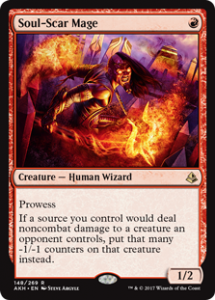
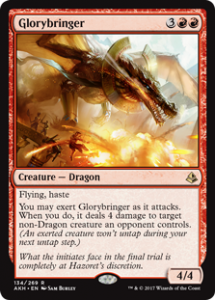
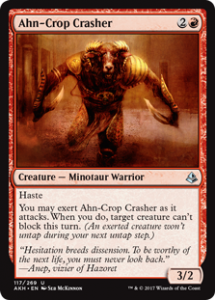
Including these three. Soul-Scar Mage never became the powerhouse that Monastery Swiftspear was, but I’m glad it eventually found a home. The other two are fun haste threats, especially Glorybringer, who now has a home in Sarkhan Brawl.
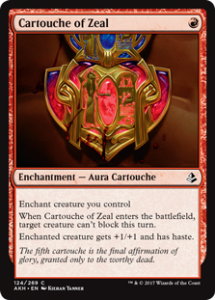
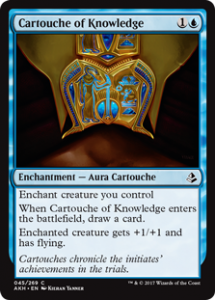
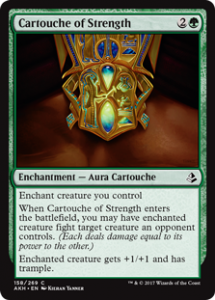
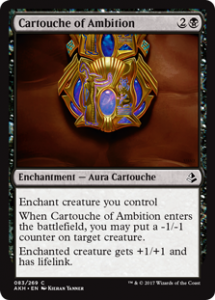
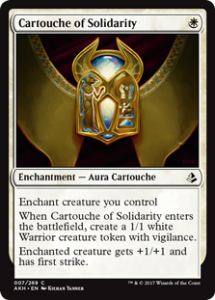
Amonkhet also introduced this weird idea of Auras being… good!? In fact, the Cartouche cycle provided some of the most effective Aura spells since the days of the one and only Rancor, each of them carrying their weight in Drafts and even popping up in Standard here and there. Cartouche of Zeal and Cartouche of Knowledge emerged as the two best for constructed, but the entire cycle is one we won’t be forgetting soon.
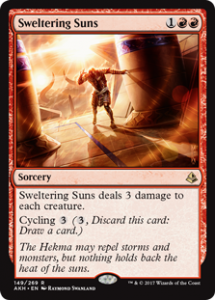
I’ve always found great success with this card, wiping boards of Zombies, Merfolk, Vampires, and the like. Strangely enough, I built and effect Blue/Red Control deck, which isn’t my normal style, and 3 damage all around was always the power play that sealed the game.
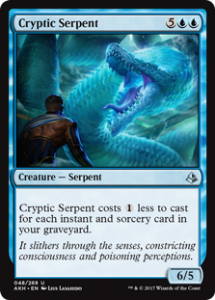
Usually, Cryptic Serpent picked up the pieces that Sweltering Sun left behind and closed out the game. He made a solid tag-team with Bedlam Reveler before the previous rotation, and now, they can bask in their post-standard careers together.
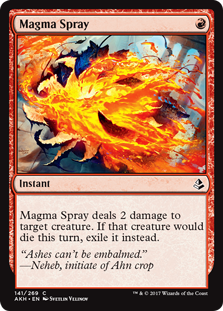
Thanks for frying so many Zombies and Gods for me, Magma Spray. You’re one-of-a-kind for just one mana.
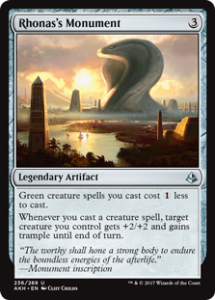
Rhonas’s Monument provided a early alternative build to the current Mono-Green in Standard, but where the pros prefer utilizing high power creatures to jam in with Heart of Kiran, I still pile one or two of these into my deck. So much fun, especially when tied to value two-drops like Resilient Khenra and Merfolk Branchwalker.
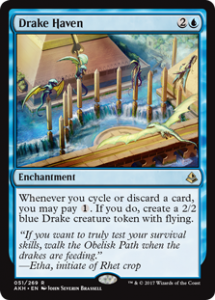
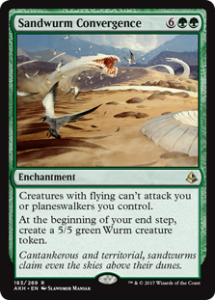
Two control enchantments I’ve always loved but never got around to fully tapping into. While I love Green decks, ramp isn’t really my style. I’m more about efficiency and slamming big creatures early, not stalling for the bigger late-game.
Drake Haven is also a card I’ve been dying to build around, but the best support cards always were too expensive to make a fun casual deck back in the days when it was viable.
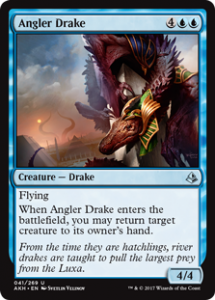
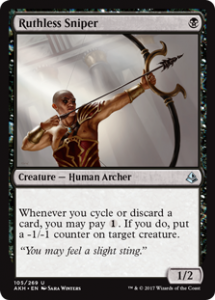
Two Limited uncommon bombs I always picked and built around whenever they popped up. They proved better in Hour of Devastation, which slowed the format down and allowed for Cycling and control cards to really shine.
Hour of Devastation
Finally, we close Standard with our picks from Hour of Devastation. I dug the Limited format this expansion provided, which many called the best in years when it came out… until Dominaria, of course. It garnered praise for how it took the hyper-aggressive cards from Amonkhet and turned them into slow, trodding weapons for dominant control decks.
For Standard, a few solid weapons turned Mono-Red into a top tier deck, and The Scarab God still haunts us today.
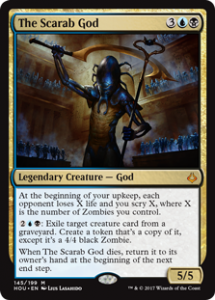
I’ve never used him, but I respect him. The Scarab God has proven to be the ultimate closer for all Blue/Black decks, and not until Core 2019’s Vine Mare did Wizards of the Coast provide a solid answer for it. I’ll be happy this card is gone, but unlike most cards you’ll read about tomorrow, I always respected the rivalry I held against this card.
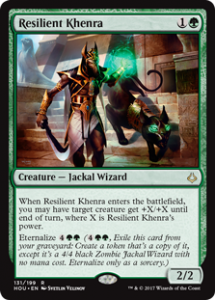
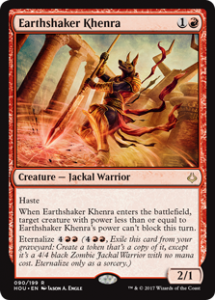
These Khenras are more my style. Earthshaker Khenra is the card that put Mono-Red over the top, and I scooped up a playset before it took off in popularity, falling in love with it at first sight.
Nowadays, Resilient Khenra is my favorite, filling in the gaps and powering the heavy-hitters of my much preferred Mono-Green deck. There’s nothing in Magic I find more exciting than a useful Green “bear,” and Resilient Khenra proved to have a little life at the end of his run.
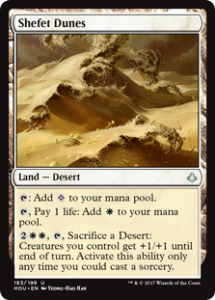
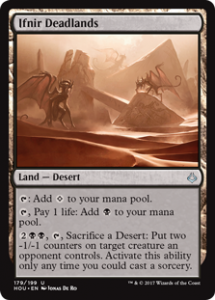
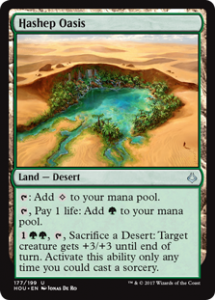
The uncommon Deserts of Hour of Devastation were pure value, providing colored mana for a cheap price and inevitable value later in the game. Ramunap Ruins was a little overpowered and banned for this reason, but the White, Black, and Green Deserts all carried their weight throughout their Standard run.
Blue… meh. Mill never became a thing, did it?
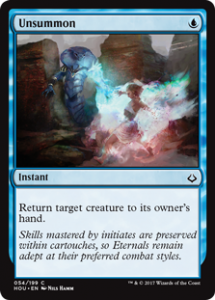
We’re losing Unsummon for the time being, a loss that’s never fun. Blink of an Eye is easily a better card, but there’s something about bouncing a charging threat for a single mana that just feels so good.
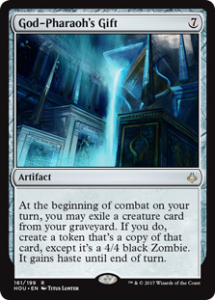
Another card I never got around to utilizing but have always respected.
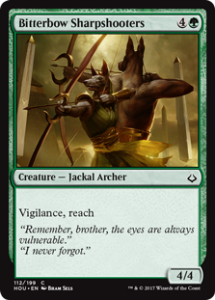
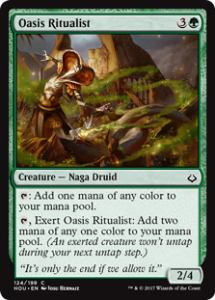
Two superstar commons of Limited that helped slow the format down. Oasis Ritualist allowed for some sweet multicolored splash decks, making Green the most powerful base color in the set and relying on the powerful bombs of all colors to close out the game.
As for the Sharpshooters, these two were more popular than the Gatewatch at one point. Players begged for the backstory of these two brothers and were far more interested in them than every Planeswalker in Amonkhet.
Plus, this card could stabilize a board on the spot, put any aggressive creature on watch, and usually attack without fear.
